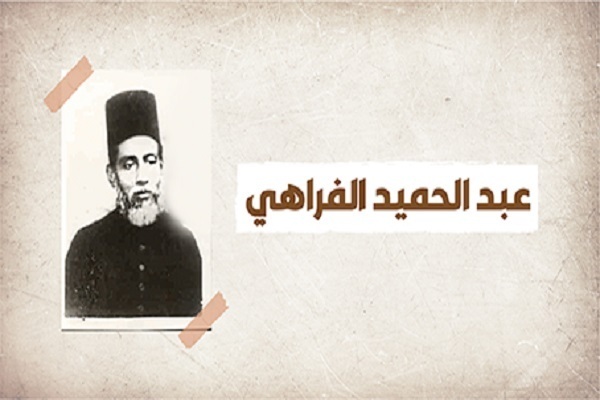An Indian Scholar Known for His Work on Concept of Nazm in Quran

His method of inference, which he called ‘the science of Nazm (coherence)’, opened a great door for researchers in understanding the secrets and eloquence of the Quran.
Sheikh Hamiduddin Abdul Hamid bin Abdul Muhsin al-Ansari al-Farahi was born in the year 1280 Hijri (1863) in Phariya, a village in the district of Azamgarh, Uttar Pradesh, India.
He learned the Quran by heart at an early age and also became fluent in the Persian language.
He then began learning Arabic with his cousin, the famous theologian and historian Shibli Nomani.
Farahi also studied Islamic sciences in classes taught by Sheikh Muhammad Abdul Hai al-Laknawi, a Hanafi Faqih.
He also travelled to Lahore to study Arabic literature from Faizul Hasan Saharaupuri, who was considered a master at that time in this field. At the age of twenty-one, he was admitted to the Aligarh Muslim University to study the modern disciplines of knowledge. He was recommended by Syed Ahmad Khan, founder of Aligarh Muslim University. Sir Syed wrote that he was sending someone who knew more Arabic and Persian than the professors of the college. While studying at the college, Farahi translated parts of At-Tabaqat-ul-Kubra of ibn Shihab al-Zuhri (784 – 845 AD) into Persian. The translation was later included in the college syllabus. Farahi eventually graduated from MAO College.
He wrote many books as well as poems and then started studying the Quran and Quranic sciences, spending most of his time in this field.
He tried to attain what other scholars had missed regarding the Quran and to research what they have not investigated.
For almost fifty years, Farahi reflected over the Quran, which remained his chief interest and the focal point of all his writings. His greatest contribution in its study is his discovery of coherence in the Quran. He has achieved the impossible, remarked Shibli Nomani while praising his student's grand achievement. Farahi demonstrated to all the Western critics that with a sound understanding of the Arabic language, one can appreciate the coherence in the Quran which is certainly not a haphazard collection of injunctions.
Read More:
By taking into consideration, the three constituents of Nazm, namely order, proportion and unity, he proved that a single interpretation of the Quran was possible.
This alone was a far-reaching consequence of the principle of Quranic Nazm.
After a lifetime of studying and researching the Quran, he died on November 11, 1930, in Matura, India’s Uttar Pradesh.
Here are some of Farahi’s books:
Works in Tafsir:
Majmua' Tafseer Farahi (Collection of Tafsir-e-Farahi), including Mufradat al Quran (Vocabulary of the Quran) and interpretations of different Surahs like Surah Ad-Dhariyat, Surah Al-Fil, Surah Ash-Shams, Surah Al-Kawthar, and Surah Al-Asr.
Works in Quranic sciences:
Asalib al Quran (Style of the Quran); Jamhara-tul-Balaghah (Manual of Quranic Rhetoric), Im'an Fi Aqsam al-Quran (A Study of the Quranic Oaths); Nizam al-Quran (Coherence in the Quran); and Complementing principles of interpretation
4244401



